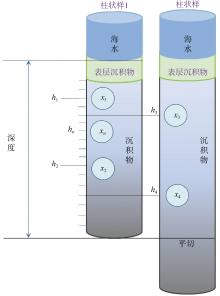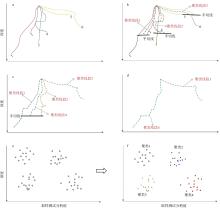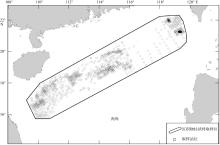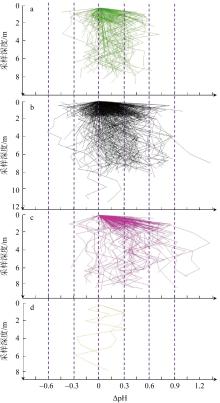| [1] |
褚伟, 2022. 多维异构数据的高阶模糊聚类算法研究[D]. 合肥: 合肥工业大学.
|
|
CHU WEI, 2022. Research on high-order fuzzy clustering algorithm for multidimensional heterogeneous data[D]. Hefei: Hefei University of Technology (in Chinese with English abstract).
|
| [2] |
杜欣, 刘大刚, 倪友聪, 2015. 一种新的并行自动聚类算法: CGC-Cluster[J]. 小型微型计算机系统, 36(6): 1182-1187.
|
|
DU XIN, LIU DAGANG, NI YOUCONG, et al, 2015. New parallel auto-clustering algorithm: CGC-Cluster[J]. Journal of Chinese Computer Systems, 36(6): 1182-1187 (in Chinese with English abstract).
|
| [3] |
贾露, 张德生, 吕端端, 2020. 物理学优化的密度峰值聚类算法[J]. 计算机工程与应用, 56(13): 47-53.
doi: 10.3778/j.issn.1002-8331.1905-0171
|
|
JIA LU, ZHANG DESHENG, LYU DUANDUAN, 2020. Optimized density peak clustering algorithm in physics[J]. Computer Engineering and Applications, 56(13): 47-53 (in Chinese with English abstract).
doi: 10.3778/j.issn.1002-8331.1905-0171
|
| [4] |
靳延安, 刘行军, 2011. 一种改进的层次聚类算法[J]. 武汉理工大学学报(信息与管理工程版), 33(6): 883-886.
|
|
JIN YAN'AN, LIU XINGJUN, 2011. An improved hierarchical clustering algorithm[J]. Journal of Wuhan University of Technology (Information & Management Engineering), 33(6): 883-886 (in Chinese with English abstract).
|
| [5] |
李瑞佳, 2022. 面向复杂结构数据的聚类算法研究[D]. 成都: 电子科技大学.
|
|
LI RUIJIA, 2022. Research on clustering algorithms for complex structured data[D]. Chengdu: University of Electronic Science and Technology of China (in Chinese with English abstract).
|
| [6] |
刘娟, 万静, 2021. 自然反向最近邻优化的密度峰值聚类算法[J]. 计算机科学与探索, 15(10): 1888-1899.
doi: 10.3778/j.issn.1673-9418.2007017
|
|
LIU JUAN, WAN JING, 2021. Optimized density peak clustering algorithm by natural reverse nearest neighbor[J]. Journal of Frontiers of Computer Science and Technology, 15(10): 1888-1899 (in Chinese with English abstract).
|
| [7] |
邵长高, 谭建军, 荆丽梅, 等, 2009. 海洋小比例尺地图精确测量及计算方法[J]. 地理与地理信息科学, 25(2): 42-45.
|
|
SHAO CHANGGAO, TAN JIANJUN, JING LIMEI, et al, 2009. Method of precise measurement and calculation of small scale marine map[J]. Geography and Geo-Information Science, 25(2): 42-45 (in Chinese with English abstract).
|
| [8] |
王芙银, 张德生, 张晓, 2021. 结合鲸鱼优化算法的自适应密度峰值聚类算法[J]. 计算机工程与应用, 57(3): 94-102.
doi: 10.3778/j.issn.1002-8331.2007-0205
|
|
WANG FUYIN, ZHANG DESHENG, ZHANG XIAO, 2021. Adaptive density peaks clustering algorithm combining with whale optimization algorithm[J]. Computer Engineering and Applications, 57(3): 94-102 (in Chinese with English abstract).
doi: 10.3778/j.issn.1002-8331.2007-0205
|
| [9] |
ARTHUR D, VASSILVITSKII S, 2007. K-means++: The advantages of careful seeding[C]. In: Proceedings of the 18th Annual ACM-SIAM Symposium on Discrete Algorithms. United States, Stanford: 1027-1035.
|
| [10] |
BLAKE R C, SHUTE E A, GREENWOOD M M, et al, 1993. Enzymes of aerobic respiration on iron[J]. FEMS Microbiology Reviews, 11(1-3): 9-18.
pmid: 8357617
|
| [11] |
CHEN C A, WANG SHU-LUN, CHOU W C, et al, 2006. Carbonate chemistry and projected future changes in pH and CaCO3 saturation state of the South China Sea[J]. Marine Chemistry, 101(3-4): 277-305.
doi: 10.1016/j.marchem.2006.01.007
|
| [12] |
FAZENDEIRO P, OLIVEIRA J V D, 2015. Observer-biased fuzzy clustering[J]. IEEE Transactions on Fuzzy Systems, 23(1): 85-97.
doi: 10.1109/TFUZZ.2014.2306434
|
| [13] |
GOVAERT G, NADIF M, 2005. An EM algorithm for the inline mixture model[J]. IEEE Transactions on Pattern Analysis and Machine Intelligence, 27(4): 643-647.
doi: 10.1109/TPAMI.2005.69
|
| [14] |
GURRUTXAGA I, ALBISUA I, ARBELAITZ O, et al, 2010. SEP/COP: an efficient method to find the best partition in hierarchical clustering based on a new cluster validity index[J]. Pattern Recognition, 43(10): 3364-3373.
doi: 10.1016/j.patcog.2010.04.021
|
| [15] |
JIN HUIDONG, LEUNG K S, WONG M L, et al, 2005. Scalable model-based cluster analysis using clustering features[J]. Pattern Recognition, 38(5): 637-649.
doi: 10.1016/j.patcog.2004.07.012
|
| [16] |
LOTFI A, MORADI P, BEIGY H, 2020. Density peaks clustering based on density backbone and fuzzy neighborhood[J]. Pattern Recognition, 107: 107449.
doi: 10.1016/j.patcog.2020.107449
|
| [17] |
NEALSON K H, 1997. Sediment bacteria: Who’s there, what are they doing, and what’s new?[J]. Annual Review of Earth and Planetary Sciences, 25: 403-434.
doi: 10.1146/earth.1997.25.issue-1
|
| [18] |
SHAO CHANGGAO, SUI YI, TANG DANLING, et al, 2016. Spatial variability of surface-sediment porewater pH and related water-column characteristics in deep waters of the northern South China Sea[J]. Progress in Oceanography, 149: 134-144.
doi: 10.1016/j.pocean.2016.10.006
|
| [19] |
SHAO CHANGGAO, TANG DANLING, LEGENDRE L, et al, 2023. Vertical distribution of pH in the top -10 m of deep-ocean sediments: Analysis of a unique dataset[J]. Frontiers in Marine Science, 10: 1126704.
doi: 10.3389/fmars.2023.1126704
|
| [20] |
SUN QINGYANG, TANG DANLING, WANG SUFEN, 2012. Remote-sensing observations relevant to ocean acidification[J]. International Journal of Remote Sensing, 33(23): 7542-7558.
doi: 10.1080/01431161.2012.685978
|
| [21] |
TANG DANLING, KAWAMURA H, DOAN-NHU H, et al, 2004. Remote sensing oceanography of a harmful algal bloom off the coast of southeastern Vietnam[J]. Journal of Geophysical Research: Oceans, 109(C3): C03014.
|
| [22] |
TANG DANLING, NI I-H, MULLER-KARGER F E, et al, 1998. Analysis of annual and spatial patterns of CZCS-derived pigment concentration on the continental shelf of China[J]. Continental Shelf Research, 18(12): 1493-1515.
doi: 10.1016/S0278-4343(98)00039-9
|
| [23] |
YANAGAWA K, MORONO Y, DE BEER D, et al, 2013. Metabolically active microbial communities in marine sediment under high-CO2 and low-pH extremes[J]. ISME Journal, 7: 555-567.
doi: 10.1038/ismej.2012.124
|
 ), YAN Bin1,2(
), YAN Bin1,2( ), CHEN Qiu1,2,3
), CHEN Qiu1,2,3













